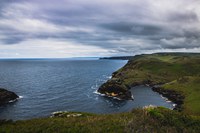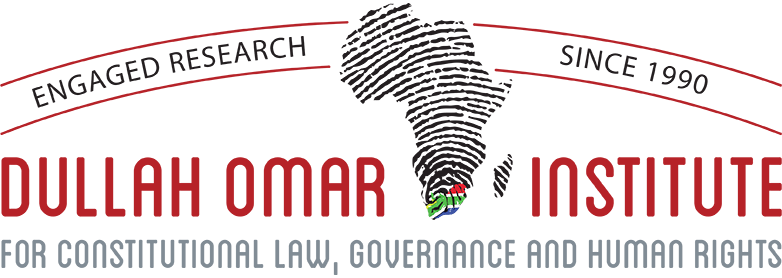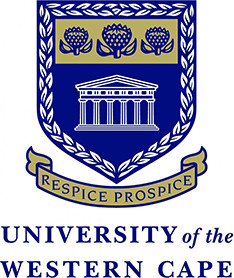Building capacity at the municipal level to develop the local economic development potential of marine resources
This article is based on research commissioned by the Local Government Sector Education and Training Authority (LGSETA) on building capacity at the municipal level to develop the local economic development (LED) potential of marine resources. The research sought to answer three questions:
- What are the roles and responsibilities of the state, private sector and communities (including individuals) with regard to marine resources?
- What economic realities and opportunities exist in the marine resources sector?
- What capacity building around marine resources at a municipal level is required to assist municipalities in their local economic development strategies?
Primary data collection included a survey of key institutions which are involved in capacity building in the marine resources sector; interviews; and engagements with individuals representing key stakeholders. The secondary analysis covered an analysis of international and local literature; and an analysis of relevant data and information from key stakeholders.
A background to marine and coastal management
Key enabling conditions for effective marine and coastal area-based management include governance, institutional framework, funding and capacity. Area-based management approaches can be used independently, or in combination with other types of approaches, to address a range of marine and coastal policy issues, and so serve as a mechanism to sustainably balance the use of the ocean with its conservation needs.
An assessment of community-led marine conservation in the Western Indian Ocean (covering coastal states from Somalia to South Africa) found that marine conservation works best when local communities are responsible for fisheries management. It notes that ““a revolution” in the management of protected areas” is underway, with almost half of the marine protected areas in the Western Indian Ocean now under local community stewardship.
Marine protected areas (MPAs) are zones of the seas and coasts designed to protect wildlife from damage and disturbance. To date, MPAs have typically been managed by governments rather than by local communities. While MPAs are vital tools for marine conservation, they often fall short of their potential. As a result, coastal communities across the Indian Ocean are taking more responsibility for their resources by setting up conservation zones known as “locally managed marine areas” or LMMAs.
Marine Spatial Planning is an emerging process that is being implemented by an increasing number of countries. The application of the Marine Spatial Planning process will lead to economic, social, ecological and governance benefits that will contribute to achieving sustainable development and national development objectives. It will promote a culture of good ocean governance and thereby:
- Achieve integration among different objectives and economic sectors;
- Manage competing demands on its ocean space;
- Enable the co-existence of compatible activities wherever possible; and
- Enable co-ordination with terrestrial and coastal planning as much as possible.
South Africa is now working with its neighbouring countries, in particular under the Benguela Current Commission, and cooperating with international partners in developing the necessary capacities to pursue Marine Spatial Planning.
A number of challenges in marine resource management exist. These include pollution, with 80% of marine litter stemming from land-based sources largely as a result of insufficient solid waste management. Fisheries crime and corruption are a second key challenge in marine resource management. Conflicts in an intergovernmental and inter-agency space can undermine management and conservation objectives. Key challenges of urgent importance are those of coastal livelihoods and illegal, unregulated fishing. In addition, marine spatial planning and the implementation of an ecosystems approach to fisheries are critical. Climate change is a critical issue to be properly addressed in marine resources work. Finally, it is important to note the effects of the COVID-19 pandemic including the impact it is having on marine resources such as the potential for increased overfishing, impacts on eco-tourism and the like.
A number of legislative and policy frameworks frame marine resource management in South Africa. These include the National Development Plan (NDP) which aims to protect coastal land, oceans and the country’s natural resources from pollution, exploitation, climate change and additional pressing issues that threaten these environments. Schedule 4B and 5B of the Constitution of South Africa list municipal powers and functions which are of direct relevance to marine resources. The Marine Living Resources Act of 1998 (MLRA) is perhaps the most relevant and direct piece of legislation impacting the sector. Other legislation includes the Marine Spatial Planning Act of 2018, which provides a framework for marine spatial planning in South Africa, including institutional arrangements; the National Environmental Management of 2014: Integrated Coastal Management Act of 2008 which aimed to establish a system of integrated coastal and estuarine management in the Republic, including norms, standards and policies; and the Maritime Safety Authority Act of 1998, which is focused on ensuring the safety of life and property at sea, and seeks to prevent and combat pollution from ships in the marine environment and promote South Africa’s maritime interests.
South Africa’s marine and coastal context
South Africa is bordered by two oceans and has a coastline of almost 4000 kilometres with very diverse ocean environments. A total of 12 district municipalities and four metropolitan municipalities provide the local governance along this coastline. There are a total of 42 marine protected areas in the South African Exclusive Economic Zone (EEZ), after consolidation, with a total area of 15.5% of the country’s EEZ.
A contextual analysis of the 16 coastal municipalities in the country found vastly different situations in economic, population, inequality and poverty terms. Municipalities range from Category A metropolitan hubs, including eThekwini and Cape Town, to relatively small, low-density municipalities such as Namakwa in the Northern Cape.
All three spheres of government have powers and functions (often overlapping) that relate to the management of the marine and coastal environment. Municipalities govern, plan for land uses, protect land uses and enhance them whilst optimising social, economic and environmental opportunities as defined primarily through national-level legislation. All coastal municipalities exercise their powers and functions within the coastal zone, where they share many of their roles and responsibilities with national and provincial governments.
While the marine economy and coastal management plans and processes do receive mention in District Development Model One Plans and Integrated Development Plans of coastal municipalities, what this actually means in practice is more difficult to determine. Larger municipalities may have departments dealing with, for example, coastal management, however smaller municipalities do not. The economic, management and operational aspects of how municipalities relate to coastal management is often subsumed in larger social, economic and environmental strategies and action plans of municipalities.
At a national level, there are at least seven national departments which play a role in maritime issues, including the Department of Labour, Department of Higher Education, Department of Agriculture, Department of Environmental Affairs, Department of Transport, Department of Trade and Industry and Department of Public Enterprises. There are also four state-owned entities, a regulatory body and a safety association playing a role in this sector. Many provinces have marine-related strategies in place. There are also a number of training programmes and educational initiatives focussing on the marine economy.
The Presidency launched Operation Phakisa in October 2014. The programme was designed to fast-track the implementation of solutions on critical development issues facing the country. One of the key components was the ocean economy. Another of Operation Phakisa’s initiatives was to establish the Marine Protection Services and Governance (MPSG) Lab, which aims to implement an overarching, integrated governance framework for the sustainable growth of the ocean economy in order to maximise socio-economic benefits while ensuring adequate ocean environmental protection.
It should be noted that municipalities do not have any direct control over many elements of the maritime sector. Transnet in large measure owns and operates the provincial ports. However, regardless of the limited municipal role relating directly to ports, municipalities are critical stakeholders within the wider maritime industry. Local government is responsible for the provision of services, maintenance of roads, the development of new roads, spatial and development planning, and in general, ensuring that the business environment is conducive to future growth.
The aquaculture and marine fisheries sector is an important local economic sector in most municipalities and plays an important role in food security for small-scale and subsistence fishers. The issuance of fishing rights has had several controversies including the impact on the rights of individual and artisanal subsistence fishing, with calls being made for improved capacity building of these small-scale fishing communities and persons.
Local municipalities are also mandated to align their marine-related objectives and their municipal coastal management programme to the National Coastal Management Programme of South Africa.
Among the myriad of implementation tools that are available within the Integrated Coastal Management (ICM) Act, Coastal Management Programmes (CMPs) are arguably the most powerful integrating instruments available. A CMP is a policy directive for the management of the coastal zone, playing a vital role in bringing together the various spheres and sectors of government, private sector activities and community activities on the coast. This aims to ensure the effective implementation of ICM over a projected period by ensuring that the development and use of natural resources in the coastal zone are done in the best interests of the public and economy, while being ecologically sustainable.
Some municipalities have very long coastlines to manage and innovative ways could be found to develop solutions to their management. One example of such a solution is in KwaZulu-Natal where a municipal coastline of over 500 kilometres has a Decision Support info-portal to assist local coastal managers in the absence of human capacity support and tools. High-level technology is also being used to deal with coastal and marine resources management problems. For example, in January 2022, the SpaceX Falcon 9 deployed three satellites to help the government monitor shipping activities on the South African coastline. In some areas, local maritime clusters are being established to bring together key stakeholders in the industry.
Key findings
Finding 1: Confusion regarding powers and functions
There is clear duplication between the different spheres of government in terms of their mandated powers and functions. There is some confusion or lack of clarity on the nuances of the roles and responsibilities between the province, district, and local municipalities. Overall, the role of local government is limited, but also complex in terms of how it is exercised in enhancing marine resource management. An obvious area is that municipalities must enforce by-laws but their safety officers do not have the power to arrest. Strong criticism is also found of the top-down processes employed by the Department of Forestry, Fisheries and the Environment (DFFE) such as in the Operation Phakisa Marine Economy Master Plan process, where local government and civil society organisations are not provided a central role in this process.
In addition, part of the challenge of building local marine economies is that whilst LED is seen as a national priority, it is generally weakly developed, even though the national policy recognises the need to create an enabling environment, participation by all stakeholders, good governance and political commitment, capacitated stakeholders and facilitators, ongoing learning and funding.
At the same time, DFFE and other national departments must recognise that a far more decentralised approach is required in implementing policies, with municipalities positioned as key partners in all implementation programmes. For example, Marine Protected Areas currently fall under DFFE but the only way to properly maintain them would be to have fully functional working relationships with coastal municipalities so that tourism and other economic and social advantages could accrue. Training here is important, particularly in cultural tourism and awareness and visitor research shows that tourists need more authentic experiences, not just mass consumer-based ones.
In addition, there is a need for a much more localised approach to Marine Living Resources Act management, and educational activities must be expanded upon. Climate change requires strong education programmes, particularly at a local level so one is able to get future-proofing.
Here, organisations such as the Marine and Coastal Educators Network or SA Network for Coastal Research should play a major role in developing curricula beyond just the Marine Science Curriculum for Standards 8, 9, and 10.
There are a wide variety of excellent and informational websites which should be promoted, examples of which are in South Africa and internationally.
Finding 2: Need for differentiated approaches
The descriptions of the various coastal municipalities show the degree to which they vary from each other. Any capacity-building strategy to deal with the local marine economic development opportunities must take into account the significant differences in economic, population, inequality and poverty terms. Municipalities have also identified different opportunities for capacity building.
Finding 3: Better integration across the spheres and other role players
There is a need for integration of initiatives across the three spheres, from planning and budgeting to implementation, development to enforcement. There are a number of good intergovernmental strategies to try and address some of the weaknesses found in improving integration. The KZN Coastal Coordinating Committee and other Provincial Coastal Coordinating Committees are such initiatives.
In addition, there are numerous institutes, organisations, fora and other key committees that work in this sector. Expert advice and research is readily available and mechanisms should be developed to integrate and utilise this research in updated coastal management plans, training initiatives etc.
Finding 4: Lack of capacity across all spheres
There is a lack of capacity across all three spheres of government which limits the effectiveness of marine policy and strategies. The National Development Plan (NDP) and National Spatial Development Plan (NSDP) envision a South Africa whose state institutions play a more transformative role in delivering services to the people while addressing challenges imposed by inequality, unemployment and poverty. In that envisioned state, public entities are well run and managed by skilled and deserving public office bearers "who are committed to the public good and capable of delivering consistently high-quality services, while prioritising the nation's developmental objectives" (NDP Chapter 13).
Furthermore, the new South Africa, as envisioned by the NDP, is managed by technocrats who are capable of formulating and implementing developmental policies. Sector Education and Training Authorities (SETA) were established and rationalised according to economic sectors to buttress the transformational role of the state by impacting the skills profile of sector employers, partly, to address historical imbalances on the demographic profile of economic opportunity.
Finding 5: Limited community involvement
There appears to be limited community involvement in coastal management. There is a need for local, community involvement and more flexibility in the development of marine-based initiatives.
Recommendations
A number of recommendations can be extracted for future focus and/or research. These include:
- LGSETA working with other local government stakeholders such as the Department of Cooperative Government and Traditional Affairs (COGTA), National Treasury (NT), South African Local Government Association (SALGA), to capacitate municipalities on their roles and mandates as they relate to the marine economy and coastal management. This includes ensuring effective integration with provincial and national spheres. It is recommended that the District Development Model (DDM) process be explored as a vehicle to ensure this integration, specifically for the 16 coastal municipalities affected.
- Department of Trade and Industries (DTI) should coordinate key economic development agencies involved in economic issues (tourism, manufacturing, etc.) to determine clear strategies and action plans focused on realising the potential of LED projects in the area of the marine economy and coastal development. This includes leveraging support from relevant funds and skills development programmes, encouraging investment through the development of industry-specific investment strategies and policies, and the coordinated provision of training and skills required for the sector.
- DFFE and COGTA should coordinate the development of programmes which unite the various role players in the sector i.e. scientists, marine experts, academia etc. through linking them to community awareness initiatives, skills development and training.
- LGSETA should play a far more active role in assisting municipalities around issues such as the following:
- Capacitating municipalities to identify scarce skills in the marine economy and coastal management sectors, put succession planning in place and ensure human resources has the correct post descriptions:
- Training programmes on environmental or coastal law enforcement: This would assist greatly in ensuring there are career paths in the various streams of the marine economy and coastal management;
- Provide short courses on specific themes around integrated coastal management, marine safety, the marine economy, etc. including sharing strategic and action plans;
- Taking advantage of the wealth of knowledge in places like the City of Cape Town and eThekwini, as the two relatively well-capacitated municipalities from a coastal management perspective. LGSETA would do well to facilitate and fund a process whereby experienced officials from these municipalities give workshops to other smaller and less well-capacitated municipalities on critical coastal management responsibilities such as the development of coastal management lines, ensuring responsibilities in terms of the Integrated Coastal Management Act are achieved etc;
- Developing courses to capacitate officials in relation to the maintenance of existing coastal infrastructure and the building of new infrastructure. This includes capital or operational project management;
- Developing course materials and running courses on the professional management of municipal-owned resorts, coastal facilities and services;
- Awareness of the economic value of the marine economy and research or analysis or planning capabilities;
- Working with partners to grow the marine economy and how to put partnerships in place;
- Capacitating local councillors in terms of the value of the marine economy and coastal infrastructure maintenance and new infrastructure; and
- Developing strategies and information programmes on sourcing the funding for coastal adaptation and sea defence projects and the administration throughout the project life cycle of such projects.
This article is part of a series reporting on research commissioned by the Local Government Sector Education & Training Authority (LGSETA) (Contact: matodzir@lgseta.org.za)






